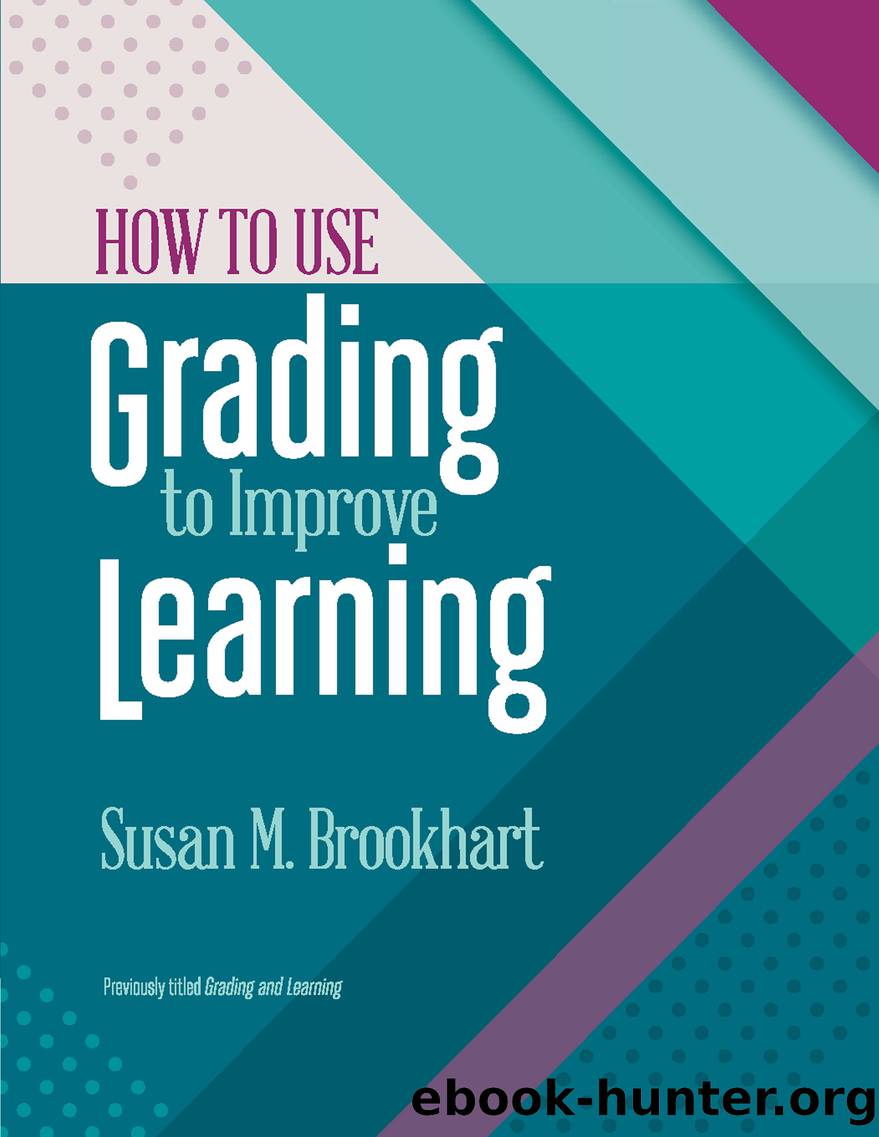How to Use Grading to Improve Learning by Unknown

Author:Unknown
Language: eng
Format: epub
ISBN: 4921986
Publisher: Association for Supervision & Curriculum Development
Published: 2017-07-01T00:00:00+00:00
Strategy 8: State Grading Policy Clearly
Daniela was a straight-A student at her high school. One of her teachers told her he thought she was on track to be the valedictorian at her high school graduation ceremony. Excited, her parents called family members in other states, and they planned a big family reunion around Daniela's graduation. Imagine their surprise and disappointment when another student was asked to be valedictorian! It turns out that Daniela's classmate had taken a combination of courses that, in the weighted grading system the school used to calculate grade-point averages, put him three-thousandths of a point ahead of Daniela.
The use of grade-point averages is only one of many grading policies that should be explicitly stated. In fact, rules for grade-point averages are one of the few grading policies you can count on being written down somewhere. Many so-called grading policies at the district level are not full policies but just statements of cutoff points on a percentage scale (93â100 = A, and so on) and a description of how grade-point averages are calculated. I recommend that grading policies be more complete than that. Districts should spell out what they intend grades to mean and how they intend grades to be used. Figure 5.5 lists issues that district-level grading policies may address and suggests strategies for communicating those policies.
Download
This site does not store any files on its server. We only index and link to content provided by other sites. Please contact the content providers to delete copyright contents if any and email us, we'll remove relevant links or contents immediately.
Macmillan Primary Grammar 2 Pupil's Book by Unknown(413)
Figuring Out Fluency in Mathematics Teaching and Learning, Grades K-8 by Jennifer M. Bay-Williams & John J. SanGiovanni(373)
The Principal's Guide to Curriculum Leadership by Sorenson Richard D.;Goldsmith Lloyd M.;Mendez Zulma Y.;Maxwell Karen T.;(296)
Learning from Accidents 3rd ed by Trevor Kletz (2001)(259)
English Grammar Practice--The Noun by Roxana Nastase(255)
Harnessing Technology for Deeper Learning by Scott McLeod(249)
Text-Dependent Questions, Grades K-5 by Douglas Fisher & Nancy Frey & Heather Anderson & Marisol Thayre(233)
A Guide to Curriculum Mapping by Hale Janet A.;(229)
How to Do Everything with Google Tools by Unknown(222)
English Language Program Administration by Unknown(221)
Deep Change Leadership by Reeves Douglas;(209)
The Grammar Teacher's Activity-a-Day by Jack Umstatter(204)
The Power of SMART Goals by Conzemius Anne;O'Neill Jan; & Anne Conzemius(193)
Beyond the RTI Pyramid by Bender William N.;(177)
Aligning and Balancing the Standards-Based Curriculum by Squires David A.;(174)
Functional Neuroradiology: Principles and Clinical Applications by Scott H. Faro (editor) Feroze B. Mohamed (editor)(173)
Using Data to Close the Achievement Gap by Johnson Ruth S.;(171)
Using Equity Audits to Create Equitable and Excellent Schools by Skrla Linda E.;McKenzie Kathryn B.;Scheurich James Joseph;(170)
Differentiated Instructional Strategies for the Block Schedule by Gregory Gayle H.;Herndon Lynne E.; & Lynne E. Herndon(167)
